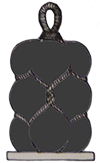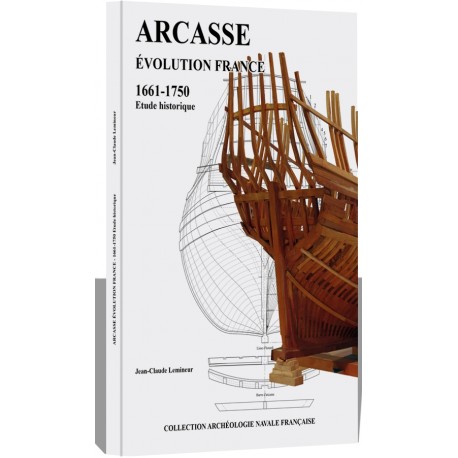ARCASSES Evolution - France 1661 – 1750
LOWER STERN FRAMING Evolution – France 1661 – 1750
92-page brochure including 20 colour pages illustrated with over 40 photos.
Historical study.
Available.
 En stock
En stock


These plans will enable modelers to better understand the complex construction of lower stern through its evolution.
A cardboard folder with flaps holding a 92-page brochure including 20 colour pages illustrated with over 40 photos.
6 large format plates enable the construction of these various lower stern models.
Early into the reign of Louis XIV, France embarks in an ambitious naval construction program to give its royal navy the capacity to compete with those of neighboring nations: England and the United-Provinces of the Netherlands have sailing superiority at sea during the first half of the 17th century.
Following Oliver Cromwell’s death in 1658, the British navy regains its crucial hegemonic ambitions against the Netherlands’ dominant position. These ambitions are share by Louis XIV who forms an alliance with Charles II, crowned in 1662. This “reconciliation” allows the possibility of comparing the architectural characteristics of ships from both nations. The most notable difference resides in the rounding of the British sterns compared to the French square sterns.
Thus, the French navy seeks the adoption of rounded sterns on its vessels; it would take nearly thirty years to achieve.
Composition of the book
A first chapter is dedicated to the evolution of the stern rounding through the period stretching from 1661 to 1750.
A more technical second chapter is dedicated to the dimensioning of the tucks, as well as the manner in which they are designed.
The appendix assembles several documents from the time period; most of them preserved within national archives:
- An extract from the treatise written by François Coulomb in 1683 regarding the construction of lower sterns.
- A Construction assessment, dated to October 12, 1677 for the 60-gun vessel le Courageux.
- A report in which are listed observations made on the construction differences between British and French ships. This document was drawn-up in Versailles and is dated to December 9, 1672.
- A memoire from Jean Guichard dedicated to the same subject and written around 1680.
These documents are complemented by the identification of the various participants in these meetings.
In conclusion, the plans of the Royal-Louis from 1692 are the subject of comments regarding their origin.
And lastly, in addition, the book includes a photo album showing models built from the plans provided:
Initial lower stern.
Lower stern from around 1680.
British style lower stern according to F. Coulomb.
British style lower stern according to the B. Ollivier method.
Half-round, half-square lower stern according to the same method.
British lower stern according to the 2nd method from B. Ollivier.
Canting the fashion pieces.
Inclined and drifting fashion pieces – fashion pieces vertical drift.
Plate list:
PL. 1 – Dutch inspired square stern.
PL. 2 – Dutch inspired square stern 1780.
PL. 3 – British style lower stern according to descriptions by F. Coulomb.
PL. 4 – British style lower stern according to B. Ollivier – 1st method.
PL. 5 – Half-round, half-square British style stern according to B. Ollivier.
PL. 6 - British style lower stern according to B. Ollivier – 2nd method.
These plans will enable modelers to better understand the complex construction of lower stern through its evolution.
A cardboard folder with flaps holding a 92-page brochure including 20 colour pages illustrated with over 40 photos.
6 large format plates enable the construction of these various lower stern models.
Author : Jean-Claude Lemineur Translated by Gilles Korent
No customer comments for the moment.











